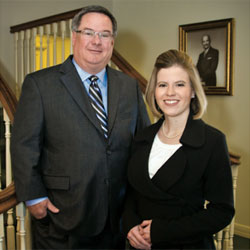“Any fact facing us is not as important as our attitude toward it, for that determines our success or failure.” –Norman Vincent Peale In the last issue, we talked about getting your job search skills out of the Stone Age by using social networking sites, cleaning up your Google results, making your e-mail address and phone message professional, volunteering your professional skills to nonprofits and updating your computer and other skills. In this issue, we’ll talk about getting your résumé in shape. Your résumé is you. If it’s clear, easy to understand and read, polished and proficient, it will reflect the same things about you.
Here’s a quiz question: What is the purpose of the résumé? Think about it for a second. Before you read on, phrase your answer. Do you have your answer in your head? OK, here it is: The one and only purpose of a résumé is to get an interview. That’s it. Its purpose is not to get a job; its purpose is to get an interview.
HOW IT LOOKS
Your résumé, cover letter and interview are all ways of presenting yourself. There are two parts to self-presentation: the initial “look” and the content. Like it or not, we often judge a book by its cover, and if the cover is a mess, we never give the book much of a chance to show its content. In my job as a business editor, I receive hundreds of résumés from people who want advice on how to polish them. They run the gamut from dense, 8-point type with one-quarter-inch margins in a desperate attempt to get every facet of their writers’ lives onto one page to résumés with so many different fonts and colors and fancy formats that they look like the cover of a cereal box. The overall look of your résumé is as important as what goes into it, because how it looks determines whether it’s ever read at all.
It should be easy on the eyes, with plenty of white space, printed on substantial paper with clear, black print. If it goes to two pages, so be it, especially if you have substantial experience. If the alternative is using a font your prospective employer can’t read without a magnifying glass, and using margin-to-margin blocks of dense print reminiscent of Moby Dick, no one’s ever going to want to plow through it. The résumé should be visually “scannable” so your prospective employer can glance through it for dates, for employers, for jobs and for specific accomplishments without having to hunt for them. He or she should not have to use some sort of secret decoder ring to determine that items bolded and underlined are employers, while items italicized and in a bigger font are job titles, and items underlined and in all capitals are degrees.
Run your résumé past someone unfamiliar with your work history and see how long it takes them to answer questions like these: “When did I work for XYZ Corp.? What’s my highest level of education?” and “What were my job responsibilities at ABC Co.?” If it takes them too long or too much effort to answer such questions, consider reformatting.
There are lots of formats available, but if you keep these general rules in mind, you’re likely to hit the right professional note:
Use 24-pound white or ivory paper.
Choose ONE font and font size: 12-point Times New Roman or Ariel in black.
Use no color.
Maintain 1-inch margins on the top, bottom and both sides, but do not justify the right margin.
Don’t be afraid to go to a second page, but don’t “stretch” either.
Of all-capitals, underlining, bolding and italicizing, use only one at a time and as infrequently as possible.
Each copy should be individually printed, not duplicated on a copy machine.
Use plenty of white space. Add space between jobs and between sections. Let the dates “hang” to the left or right so they’re easy to see and your lines of text are shorter and easier to read. (There’s a reason why newspapers and publications like SAN ANTONIO WOMAN put their copy in short columns rather than running it all the way across the page.) It’s better to indicate new sections with spacing than with different fonts, bolding, etc.
THE CONTENT
Opinions vary on what sections you should include, and whether you include some sections or not often depends on your field and your experience. But there are nine generally accepted sections for your résumé, some of which are optional and some not.
1. CONTACT INFORMATION — Put your name, mailing address, telephone number(s) and e-mail address at the top of the page, centered. If you don’t want a prospective employer to call you at work, don’t include your work number.
2. OBJECTIVE — This isn’t one of my favorite sections because it could exclude you from a job that might not be exactly what you want but could do nicely in a pinch. If you decide to include the objective, make it a brief (not more than three lines) indication of your job objective, excluding salary requirement.
3. CANDIDATE SUMMARY — Summarize who you are as a prospective employee in three or four lines, including your strengths (“highly motivated, proactive team player with excellent communication skills”), your fields of expertise (“highly experienced in dog training/ space robotics/lawn maintenance/ whatever”) and your accomplishments (“with proven record of achieving sales goals/meeting strategic objectives/etc.”)
4. WORK EXPERIENCE — List your work experience in reverse chronological order, with inclusive dates. The employer and the employer’s location (city and state/country) go on the first line, followed by your job title and a brief job description (no more than three lines). After that, bullet specific accomplishments:
These should be measurable where possible (increased sales 25 percent, reduced expenditures 15 percent), and they should not be repetitions of the duties and responsibilities in your job description. Show how you have been successful and proactive: In both the job description and the accomplishments, use strong, active verbs such as advanced, built, conducted, directed, engineered, founded, generated, headed, implemented and justified (and that’s just the first 10 letters of the alphabet!) Show teamwork skills, but don’t neglect evidence of your ability to work independently and to see the big picture.
As your work goes further into the past, devote less space to each job, and unless you’re just starting out, delete entirely those early lifeguarding and waitressing jobs.
5. EDUCATION — List your degrees and certifications in reverse chronological order, with inclusive dates, not just the date the degree was awarded. The name of the institution comes first, followed by its location (city and state/country). On the next line is the degree, and the lines following bullet any particular accomplishments, like a stellar GPA or specific coursework applicable to the job and not obvious from the name of the degree or certification. Unless high school is your highest level of education, don’t include it. If you’re a recent graduate, include extracurricular activities, but delete them if you have significant job experience.
6. AWARDS AND HONORS — Include the date, the name of the award, the awarding body and a brief description of the selection criteria.
7. PUBLICATIONS — If you’ve undertaken writing for some Web sites, as suggested above, these can go here, as can any more significant publications.
8. MEMBERSHIPS AND AFFILIATIONS — Include only those that relate directly to the job or that are volunteer work.
9. SPECIAL SKILLS — List languages spoken, computer skills and other kinds of skills that may be relevant to the job. What’s not included in your résumé? “References available on request,” reasons for leaving a job, spelling and grammar errors, photos, fancy fonts and color, any factual error, anything even vaguely resembling a lie, a list of your hobbies and interests unless there’s a specific reason for including them, and personal information such as your marital status, birth date, religion, gender or number of children.
INDIVIDUALIZE
Every résumé you send out should be specifically tailored to the job posting to which you’re responding, particularly in terms of your “candidate summary” and the accomplishments you list under your experience. The days of taking your résumé to a copy place and having 100 copies made are over.
Read the job requirements, learn about the company, and modify every résumé you send out to highlight specifically what that company is looking for. Yes, this is a lot of work, but if you’re currently unemployed, finding a job is your work.
Of course, no résumé is complete without a cover letter, and that will be our subject in the next issue.
Extra Notes:
RÉSUMÉS ON FORMS
If you have to submit your résumé via a plain-text e-mail or in a form on a Web site, you’ll have to take out all formatting or it will come out garbled.
Align all material flush with the left margin.
Double-space between paragraphs and sections (no indenting).
Eliminate all formatting: indenting, bullets, italics, bolding, underlining and font changes. You can use regular typed figures, like asterisks, in place of bullets, but keep each line flush with the left margin.
If the résumé is going into a database that the company searches for specific skills, take some time to ensure that your résumé has the keywords on which they’re likely to search. If you’re a trainer, for example, include “adult educator,” “corporate education,” and other buzzwords and keywords.
IS AGE AN ISSUE?
It’s illegal to discriminate in hiring based on age, but that doesn’t mean it never happens. If you’re over 50, you probably face prejudicial assumptions about your energy and skills that you’ll have to overcome proactively. Your résumé is one place you can do that.
Here are some techniques that can help your résumé overcome age discrimination and get you that interview, where you can show the value of your experience and that stereotypical age issues aren’t issues for you.
On older jobs, update your job titles and activities so the terms are current.
Don’t list the years when you got your degrees or certifications, but take some classes that are obviously current to show you’re keeping up with your field.
This is one of the cases where you have a reason to list activities if they show energy and vigor. Are you a marathon runner? In a tennis league? A master’s swimmer?
In your listing of volunteer work, include mentoring and anything else that shows you work well with younger people.
Show a comfort level and interest in technology, and if you don’t have that, get it. Join social networks like LinkedIn and Facebook so when your prospective employer Googles you, you’ll show up as being in the thick of things. Make sure your listing of computer skills is as broad and current as possible. If you need to take some classes, do so.
Some useful job boards for older workers include retireeworkforce.com, primecb.com and retirementjobs.com.









0 Comments